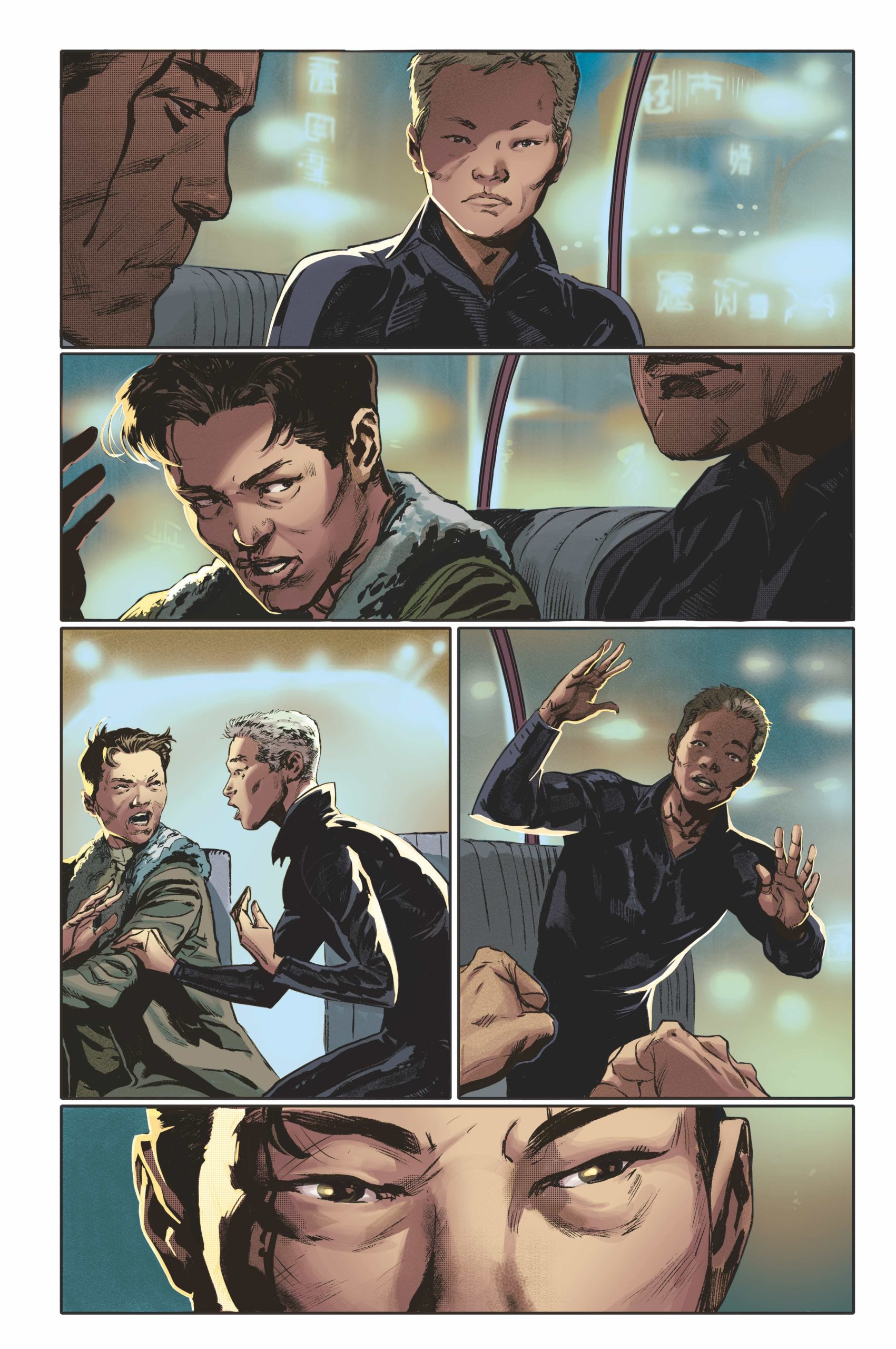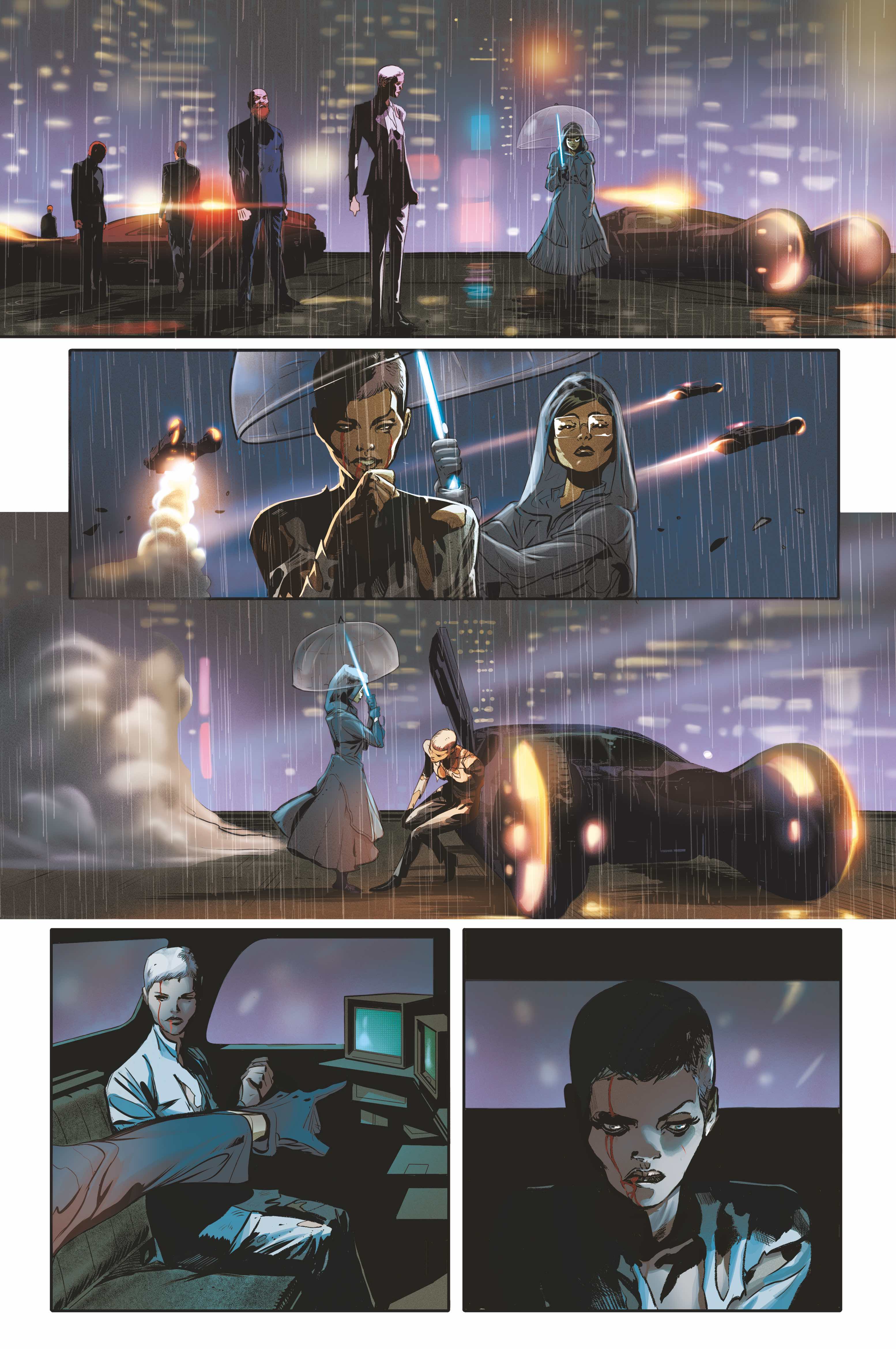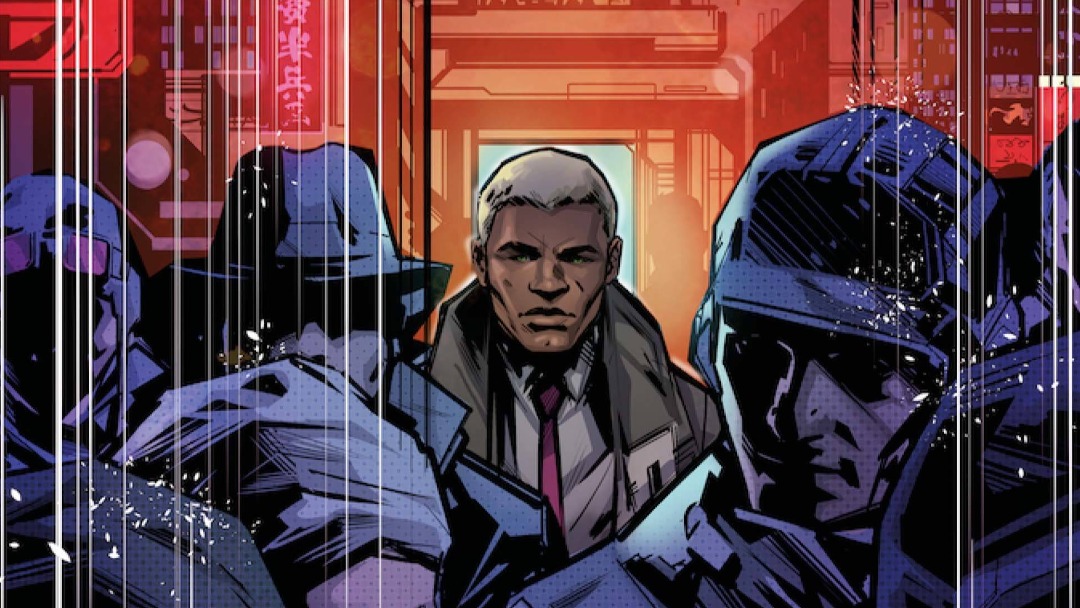Table of Contents Show
Blade Runner: Origins #3 begins to add some interesting layers to its ongoing mystery. Some of these layers were things I talk about in my review of the previous issue as a possibility, so it’s nice to see one of my theories be proven correct. But with all the layers being added, does the issue manage to stick the landing?
The Human Connection
Last issue, there was an emphasis on the beauty of nature, and in particular, the symbolic nature of trees. Trees are sort of living history textbooks, as when you cut them down, you can see the rings that formed as a result of their environment and age. It literally holds its legacy inside of it, asking for you to discover it, but still preserving it. I figured this was going in a direction that the Replicants were perhaps intended for preserving the human race’s legacy past their life span. In Blade Runner: Origins #3, this hypothesis became reality, at least, it appears that way.

Marcus was saved from the clutches of Tyrell by a Replicant, but not just any ordinary Replicant, one modeled after Asa, a figure prominent in Lydia’s drawings when she was a kid. Further, this Replicant insists that it is, in fact, Lydia Kine and that she didn’t, in fact, commit suicide but instead transferred her consciousness to the Replicant’s body. This is later given credence when Ms. Stahl stumbles upon Lydia and Effie’s research into transference. This could all be a disillusionment on the part of the Replicant, but it does lean into where I thought this story was going and brings up some interesting questions.
The line between Replicant and human was already blurry, but the implications of this make it almost non-existent. Two races, created for a purpose beyond their grasp, each struggling to figure out the who, what, were, why, and how of their existence. This also makes the knowledge of future developments in this franchise chilling in retrospect if this is indeed proven to be true in some compacity. I applaud K. Perkins, Mellow Brown, and Fernando Dagino for taking the concept of the prequel and heading into an actually interesting direction for untapped potential in the franchise.
Societal Woes
There is another really interesting moment in Blade Runner: Origins #3 that adds to the commentary in the book beyond the sci-fi hypotheticals. Cal and Effie’s three-page argument really hits home in our current time frame, making the cyberpunk dystopia of Blade Runner seem not that far away. Both Effie and Cal come from a pretty run-down neighbourhood, where all the dregs of society were cast off in hopes they would stay out of sight. They know what it’s like to be disenfranchised, oppressed, ignored. And yet, they both came out of the experience with two entirely different views. And the sad thing is that they are both right in their own way, as problems like these have no easy answers.
Effie sees Cal as a bit of a hypocrite, a cop that perpetuates a system of oppression upon his own kind, thinking that he is different because he is not like the others. But by being part of the establishment, maintaining the status quo, he is, in fact, part of the problem. Effie wants nothing more than to be a martyr, to break the system so hard that it grinds her up and hopefully is stopped for something else to take its place.

Cal acknowledges the cop part of his life is a bit suspect but also knows that far more hate is thrown upon him for attempting to be honourable than he would otherwise receive. The world is corrupt, and the best you can hope for is to do the good you can do, the immediate good to your friends and family. It’s a self-perpetuating cycle, damned if you do, damned if you don’t. But he correctly calls out Effie, saying she was designing robots for the great and powerful rich family known as Tyrell, her hands aren’t exactly clean either. Which is right and which is wrong? Railing against the system will only lead to pain and suffering, meanwhile maintaining the status quo only ensures that nothing can or will ever change. Neither is wholly right or wrong. Their perspectives are the symptom of the larger issue that plagues us even today, a broken and corrupt system in gridlock.
Blade Runner: Origins #3 Takes The Series In An Interesting Direction
Blade Runner: Origins #3 is a strong issue, posing some really poignant questions while layering its mystery with some depth. The final few pages of the beautifully portrayed and silent fight scene between the Tyrell goons and Cal were also brilliantly done.

